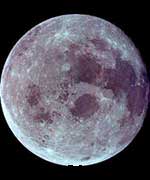
Image credit: NASA
1.Begin the New Year by observing Saturn. Saturn will be at opposition (i.e. opposite the sun in the sky) on January 13th at 08:00 UTC. Saturn is in the constellation Gemini the Twins, about 6 degrees south east of the star Pollux.
2.Begin learning the names of 20 constellations. The inclination is to start with the brightest, most obvious ones. But sometimes it can be a fun challenge to find a less conspicuous one. Obviously this is a project that could last throughout the entire year. It is also a good chance to learn which constellations are visible during each season.
3.Learn the names of 20 bright stars. While many of us know the names of the constellations, the names of the stars are somewhat less well known. Knowing the star names is a good way to find and learn the constellations as well. Sometimes a constellation will have only one or two bright stars. These can act as guide posts to finding the entire constellation. As with learning the constellations, this is a project that can last all year.
4.Count the stars in the Pleiades, also known as the Seven Sisters. This little star cluster is west of the constellation Taurus the Bull. From a dark location you may see 5 or 6 stars. Then look at them with a pair of binoculars, what do you see?
5.Observe the moon for a month. Notice how much of its surface is illuminated from night to night. Kids can use a calendar and draw what shape the moon is each night (or even day!) Use binoculars or a telescope to observe the lunar features especially near the line that divides day from night (called the terminator).
6.In June look for Mercury and Venus in the evening sky between 0:300 and 04:00 UTC. The pair will be only 0.1 degrees apart. At that distance you will probably need binoculars to tell them apart. Venus will be the brightest object in the sky while Mercury will be much fainter. Saturn will be the bright object to the North West.
7.Observe a meteor shower. The famed Perseids is visible from July 17th to August 24th with the peak occurring before dawn on August 12th . Meteor showers get their names from the constellation they appear to radiate from, in this case Perseus the Hero. The best way to observe meteors is lying back on the ground or in a lawn chair. Kids can have fun counting how many they see in an hour.
8.On September 1st, about 03:00 UTC. Jupiter and Venus will be about 1 degree apart in the west just after sunset. No need to use binoculars to find this pair, but it might be fun to see them both through a telescope. Don’t forget to look for Jupiter’s 4 large moons: Ganymede, Callisto, Europa and Io.
9. Hunt for double stars. Many of the stars that we see in the sky have one or more companion stars. In many cases they are not visible to the naked eye. Here is a good opportunity to hone your binocular or telescope skills. Begin with the star Mizar in the constellation Ursa Major (the Big Dipper); it is the middle star in the Dipper’s handle.
10.Share the sky with your children or other young people. Kids love stories, and most never tire of hearing the same ones over and over again. Learn the myths and legends of your favorite constellations and tell them to your kids. Who knows, maybe your love for the sky will spark an interest in them that will last a lifetime.
This list should give even the most timid of beginners a starting point for their celestial quest. And don’t forget, there are lots of other enthusiasts out there, don’t be shy in contacting them and asking questions and sharing your experiences. Enjoy 2005, and clear skies to you all.
Written by Rod Kennedy.

wow you guys suck big head
hahaha monkey dung
you jamacan jizz monster